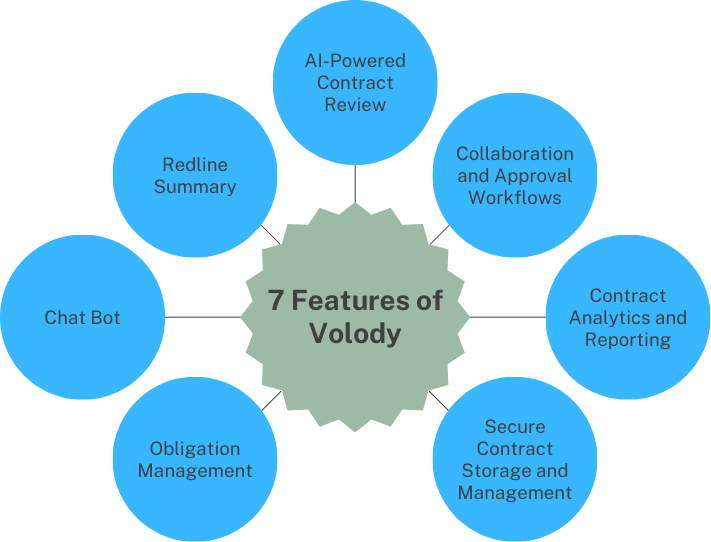Contract analysis is an important part of managing agreements. It helps businesses understand the details of contracts and make sure they follow legal and business rules. By reviewing contracts carefully, companies can spot key terms, manage responsibilities, reduce risks, and stay compliant with laws. This process not only protects the business but also helps make better decisions and improve operations.
This blog explains why contract analysis matters. It offers a clear guide on how to analyze contracts, the common challenges in the process, and ways to overcome them. You’ll also find a step-by-step approach to effective contract analysis and tips for documenting and reporting your findings.
Defining Contract Analysis in Modern Business
Contract analysis means more than just skimming through legal documents. It is a careful way to understand the relevant information and details of your agreements. You need to find important parts, check for potential risks, and make sure you follow all the needed rules.
Businesses use CLM software to handle complicated agreements and manage them better. This software helps find specific clauses within these valuable documents, keep an eye on deadlines, and point out possible problems. By doing this, makes agreement management more effective.
Related Article: What is Contract Management Software?
Overcoming Challenges in Contract Analysis

Contract analysis is very helpful, but it does come with some challenges related to contract terms. Companies often deal with many business agreements. These agreements can have complicated legal terms and may also have inconsistencies within them. Businesses can solve these challenges by using set procedures, and tech solutions, and training staff well.
Addressing Common Pitfalls and How to Avoid Them
- Lack of standardization: When agreements have different language and formats, it can cause confusion and mistakes. Using standard agreement templates and clauses helps to make things clear and consistent.
- Inadequate risk assessment: Not assessing risks well can lead to bad agreement terms or missed chances. Using AI tools for risk assessment along with legal knowledge is important for handling potential risks.
- Poor data management: Keeping agreements messy and entering data by hand can lead to mistakes and waste time. A centralized repository and automated data extraction tools can help improve data accuracy and make it easier to access.
Related Article: 5 Tips for Effective Contract Collaboration: A Short Guide
A Step-by-Step Guide to Contract Analysis

This helps to make sure that all important parts of legal agreements are deeply checked. This is a step-by-step guide. It starts with finding key terms and important rules. Then, it helps you make strategic decisions based on what you discover.
From Identification to Action: A Step-by-Step Guide
- Identification: First, figure out what you want to achieve with this process. What key terms, data points, or clauses are important for your business goals?
- Examination: Review the agreement carefully. Focus on payment terms, deadlines, liabilities, and other important parts. Use tools for analysis. They can help you find issues quickly.
- Actionable Insights: Turn the information from your analysis into actionable insights. Spot potential risks, compliance issues, and chances for improvement. Create a plan to address these points.
Best Practices in Documenting and Reporting Findings
Accurate records and reports are important for getting the most out of them. Sum up the main points. Include any risks, compliance issues, and recommended actions. Do this clearly and briefly.
Use data visualization tools to showcase insights clearly. Also, use a centralized repository. This helps everyone easily access reports and important documents. When you present valuable insights in an easy-to-understand way, it helps people make informed choices and work together better.
Related Article: How to Simplify Contract Review with AI? Comprehensive Guide
Importance of Contract Analysis in Contract Lifecycle Management

Contract analysis is not something done alone. It is a key part of the whole CLM. It gives valuable insights throughout the contract lifecycle. This starts from negotiation and drafting and goes to execution and renewal. It helps keep agreements in line with business goals and makes sure they follow legal rules. Effective contract management relies on a careful process of the contracting process, where legal teams are crucial. By spotting possible risks and chances in the agreement language, businesses can take charge of their relationships. This helps them prevent expensive fights or lost chances. Insights from contract analysis lead to smarter and better agreement management, ensuring effective contract management.
Contract analysis plays a crucial role in ensuring the smooth functioning of contract lifecycle management (CLM). By carefully examining contracts at every stage – from negotiation to renewal, organizations can identify potential risks, ensure compliance, and capitalize on opportunities for improvement. Effective contract analysis not only helps in mitigating risks and addressing compliance issues but also enables businesses to align their agreements with strategic objectives. By translating analysis into actionable insights and utilizing data visualization tools, organizations can enhance decision-making, foster collaboration, and drive better contract management practices.
Related Article: What Is Contract Negotiation? Clear Strategies & Expert Tips
The role of AI in contract analysis

Artificial intelligence (AI) has changed contract analysis in a big way. It now provides speed and accuracy that you can’t find with manual review to review contracts effectively. AI software uses machine learning and natural language processing (NLP) to look over thousands of documents at once. It can spot important terms, clauses, and data points in just a few seconds.
This automation reduces the chance of human mistakes. It speeds up the analysis process and helps businesses understand their contractual obligations better. AI can go through a lot of agreement data. This helps companies spot trends, reduce risks, and make decisions based on data.
Related Article: Contract Repository: How to Set it Up Effectively?
7 useful features of Volody that make contract analysis easier

Volody is a Contract Management software tool powered by AI. It makes reviewing legal documents easier and quicker.
|
Feature |
Description |
|
AI-Powered Contract Review |
Automates review by identifying key clauses, risks, and obligations. |
|
Collaboration and Approval Workflows |
Streamlines approval with easy collaboration across teams. |
|
Contract Analytics and Reporting |
Provides actionable insights through detailed analytics and reporting tools. |
|
Secure Contract Storage and Management |
Ensures secure storage and easy retrieval of agreements in a central repository. |
|
Obligation Management |
Tracks and manages contractual obligations to ensure compliance. |
|
Redline Summary |
Highlights key changes and differences between versions for clarity. |
|
Chat Bot |
Assists users with quick answers and contract-related queries. |
Related Article: Best Contract Management Software: Top 10 CLM in 2024
Conclusion
Understanding this is very important for businesses today. Using AI technology and following best practices can help organizations manage their agreements better. This can reduce risks and make things run smoothly. Deals with high agreement volumes and changes can be managed through careful documentation and reporting. Taking practical steps, like knowing key actions and what to avoid, is key to a good process. New tools like Volody can help make this easier, which is a great advantage for today’s fast-changing business world.
FAQs
What Are the First Steps in Beginning Contract Analysis?
Start by figuring out what you want to achieve with your analysis. Then, collect all the important documents, including paper documents, and put them in order. Take time to read through the agreements, looking closely at key terms, payment terms, and other important data that relate to your goals. This way of organizing will help you create a solid base for the process.
What Are the Most Common Risks Identified in Contract Analysis?
Common risks involve several issues. These include compliance problems, unfavorable terms, and unclear contractual obligations. You should look closely at payment terms, deadlines, and liabilities. This will help you spot any potential red flags and keep your business interests safe.





